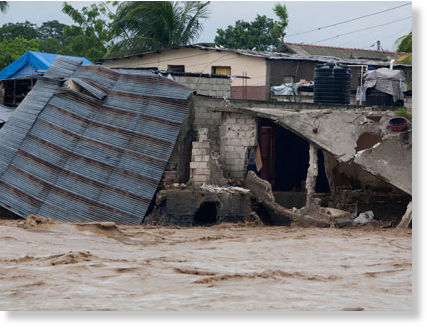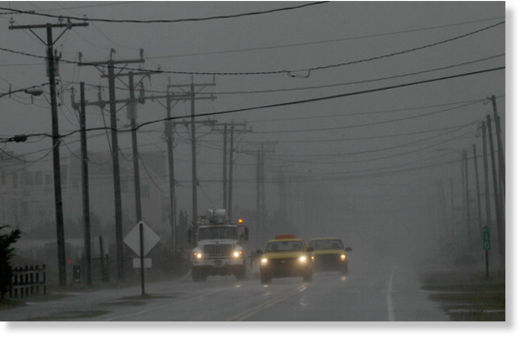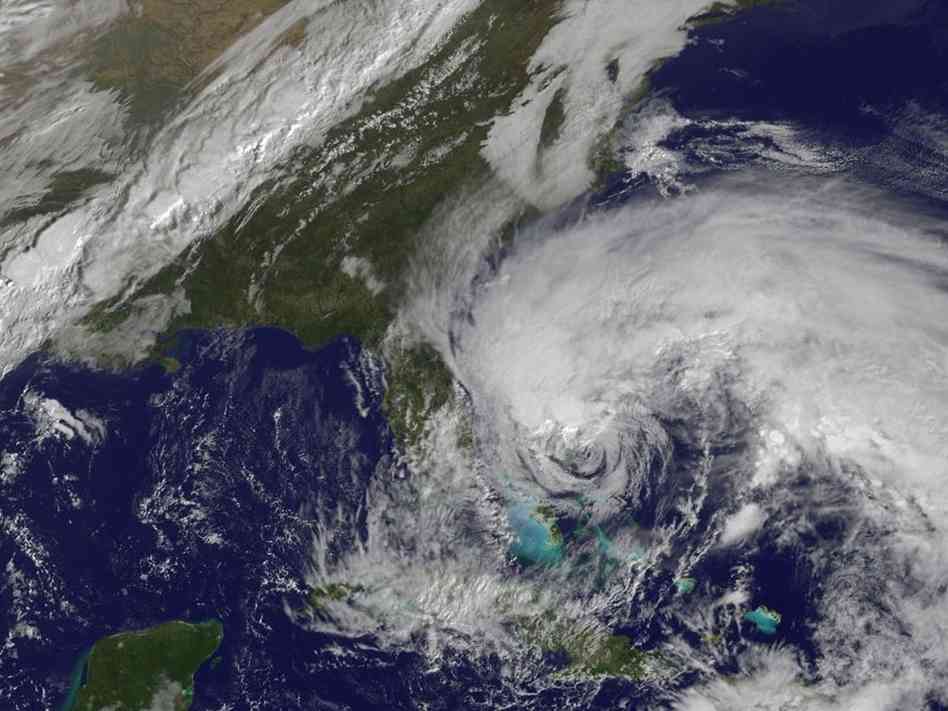
© The Associated Press/Dieu Nalio CheryMany homes remain underwater in southern Haiti.
- Flooding raises specter of cholera
- Crop losses in Cuba, Jamaica as well
Port-au-Prince - As Hurricane Sandy barreled toward the U.S. East Coast on Monday, the full extent of the storm's havoc on Haiti was just beginning to emerge.
Extensive damage to crops throughout the southern third of the country, as well as the high potential for a spike in cases of cholera and other water-borne diseases, could mean Haiti will see the deadliest effects of Sandy in the coming days and weeks.
Haiti reported the highest death toll in the Caribbean, as swollen rivers and landslides
claimed at least 52 lives, according to the country's Civil Protection office. More than three days of constant rain left roads and bridges heavily damaged, cutting off access to several towns and a key border crossing with the Dominican Republic.
"The economy took a huge hit," Prime Minister Laurent Lamothe told Reuters. He also said Sandy's impact was devastating, "even by international standards," adding that Haiti was planning an appeal for emergency aid.
"Most of the agricultural crops that were left from Hurricane Isaac were destroyed during Sandy," he said, "so food security will be an issue."
Sandy also destroyed banana crops in eastern Jamaica as well as decimating the coffee crop in eastern Cuba.
But the widespread loss of crops and supplies in the south, both for commercial growers and subsistence farmers, is what has Haitian authorities and aid organizations had worried about most.
The past several months have seen a series of nationwide protests and general strikes over the rising cost of living. Even before Hurricane Sandy hit, residents complained that food prices were too high.



